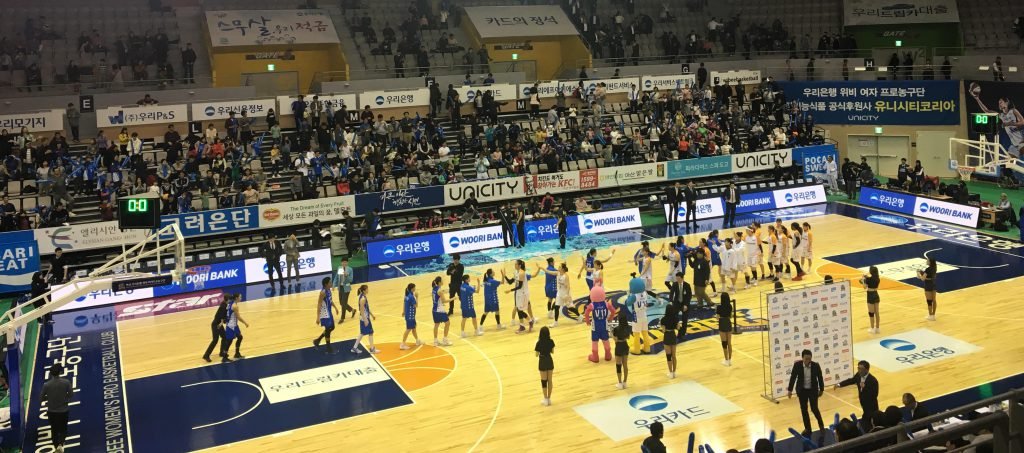This weekend I had the opportunity to attend a professional women’s basketball game.

On Friday afternoon we left in a chartered bus for the city of Asan, which is about 100km (or 62 miles) south of Seoul. The trip should have taken us only two hours, but Friday rush hour traffic added an extra hour to the drive. Fortunately, we left with just enough time to make it to the game before the end of the first quarter.

Asan is the home of the Woori Wibee, a local professional team sponsored by Woori Bank that plays in the Women’s Korean Basketball League (WKBL). The Wibee are currently ranked the #1 team in the league. The WKBL, established in 1998, comprises 6 teams from around the country. The Woori Wibee is the winningest team in the league’s 20-year history, boasting 9 championship titles.
On Friday evening the Woori Wibee were facing off against the KB Stars, owned by South Korea’s Kookmin Bank. The Stars are currently ranked #2 in the league, so it was sure to be a good game. The Wibee trailed the Stars from the jump ball through the third quarter, at one point reaching a 12-point deficit at the end of the first half. Finally, in the fourth quarter, the Wibee recovered to beat the stars 59-57.
While the game was exciting and entertaining throughout, and it was awesome to experience a home team win, I was most intrigued by the crowd and their level of engagement. I have attended hundreds of sporting events, ranging from the youth to the professional level, but I have never experienced a crowd that thoroughly participated in consistently coordinated cheers (no, not even the Brigade of Midshipmen, but we are a close second). The cheers were always led by a cheer squad wielding pom-poms or thundersticks, energizing and encouraging the crowd to cheer on their hometown heroes. The game was largely attended by families with young children and the venue was pretty full. At every single break in play there was some kind of prize drawing, dance competition, or coordinated cheer effort, and the event was clearly catered to the family environment. I especially enjoyed the Korean language twist on cheers that I was familiar with from sporting events at home in the United States. I could almost pass for somebody who know what he was doing/saying, which has been an extremely rare occurrence for me over these past three months.
Overall, the game was a great experience. Though the trip from Seoul was rather long on a Friday night (and we still had to return after the game), it was well worth it. Korean sporting events have an added layer of energy that I was not aware of before attending this game, but I would absolutely go again if given the opportunity. This event made me realize that sports are a great way to both relate to and experience an unfamiliar culture. There are certain universals in athletics that can serve as a common ground, but there are also many new aspects which are integrated into competition and the environment surrounding it that provide greater insight into a people’s culture and behavior.
